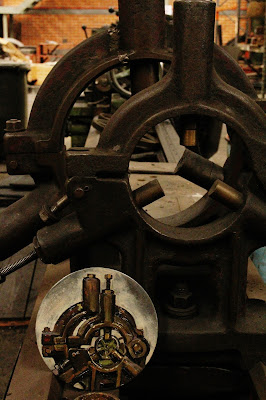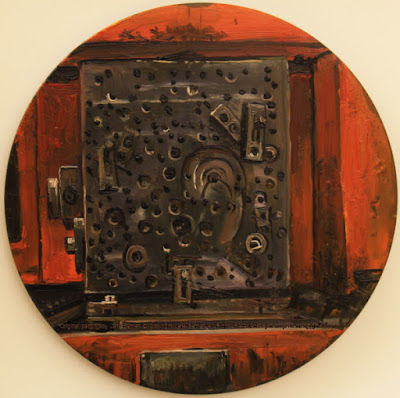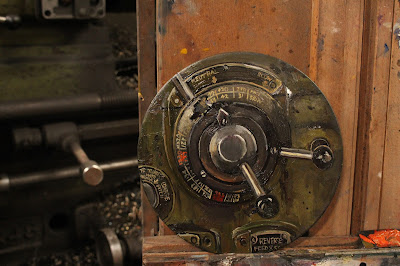This is the big brother of the small square painting that I created in "Ghost Train"
I liked the small painting so much that I decided to paint a much larger canvas that would really evoke the atmosphere of the interior of the Large Erecting Shop in pin sharp detail. All the apparent chaos and clutter of a true workshop in all its glory!
This
old office in the Large Erecting shop of Eveleigh Railway Workshops,
had been used to store stacks of windows and doors waiting to be
repaired to refurbish a carriage. It has a couple of old signs on its roof "Engine Shop" and "The Professionals", which I was told had been pinched from a local real estate agent!
It's ironic in more ways than one, because, whilst experts in their field, the people working on the restoration of 3830 were mostly volunteers.
In front of it are lathes, drills and boxes of rusting tools that obviously are many decades old.
The 3830 was put back together with the help of parts cannibalized from other 38 class locos.
The list of 38 class locos refers to the original source of particular items that finally ended up as part of 3830.
The list of 38 class locos refers to the original source of particular items that finally ended up as part of 3830.

E129 '38s are great mate'
2017 oil on canvas 91 x 122cm
Enquiries
On the weathered sky blue boards are inscriptions in white chalk about its time of service.
"3830 18 years 11 months 4 days
Into service 27/9/49
Withdrawn 31/10/67 (Illegible) birthday 23 years
Cost £53,145/2/0 Basic Wage 4/8 11/20d/hour
Builders' No 170 40 hours £8/12/0 approx"
"3830 18 years 11 months 4 days
Into service 27/9/49
Withdrawn 31/10/67 (Illegible) birthday 23 years
Cost £53,145/2/0 Basic Wage 4/8 11/20d/hour
Builders' No 170 40 hours £8/12/0 approx"
I've read worse poetry!
The scarred and half rotten boards also bear the postscript "38's are great mate" written on them.
Related Posts
























